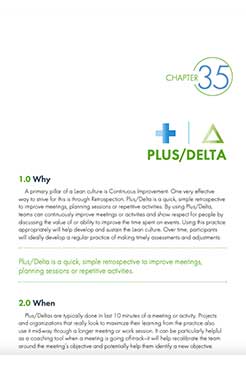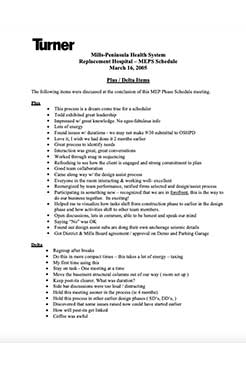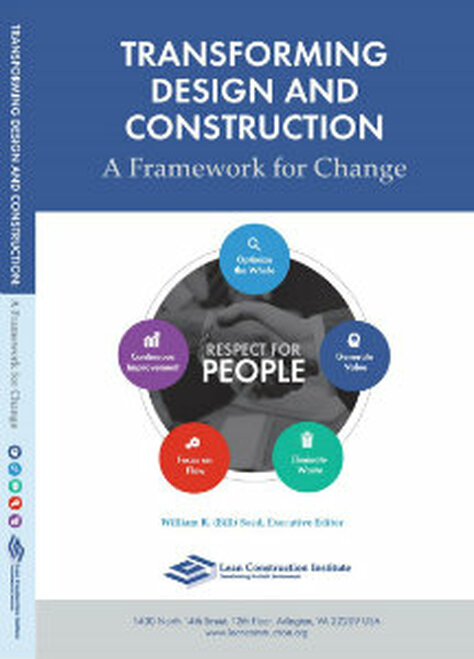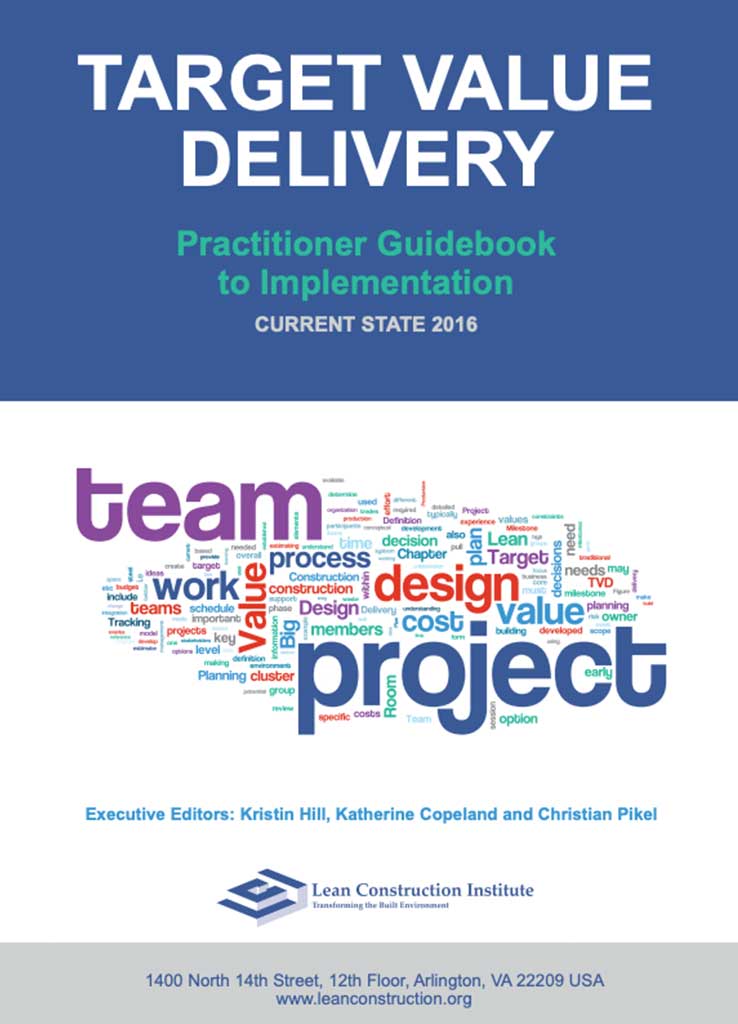Plus Delta
Introduction to Plus/Delta
Maintaining a mindset of continuous improvement is vital for any Lean process. You cannot foster a successful Lean culture without the drive and intellectual curiosity to improve the systems through which the work is being completed.
We can only move forward and advance our thinking by first looking back at what we have already done, then considering what worked and what didn’t work. Plus/Delta is a retrospective technique that challenges teams to use recent work to shape future processes.
We must also carry a Respect for People into our work, as process improvement cannot occur unless we involve all key members involved in the work team to share their thoughts and perspectives freely. Continuous improvement must be driven by everyone, not just those leading the project.
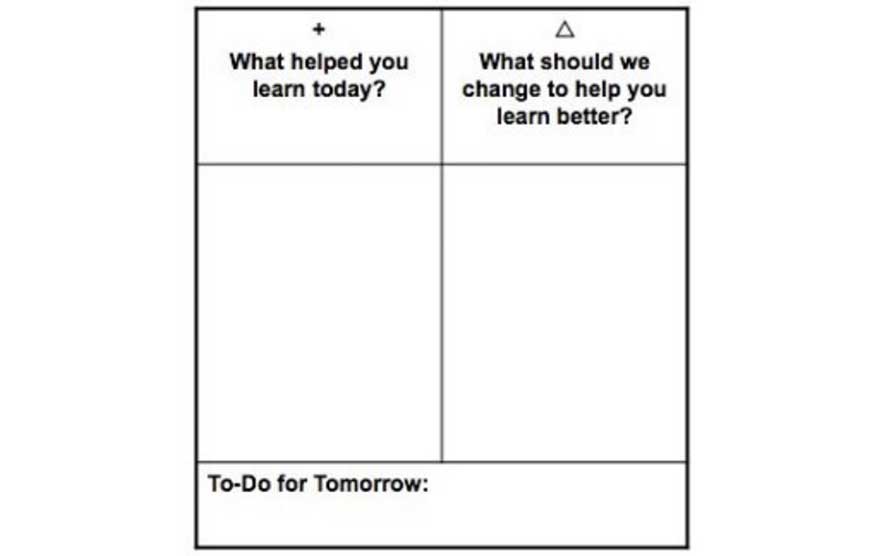
What is Plus-Delta?
A continuous improvement discussion performed at the end of a meeting, project or event used to evaluate the session or activity. Two questions are asked and discussed.
- Plus: What produced value during the session?
- Delta: What could we change to improve the process or outcome?
Who Benefits From Utilizing Plus/Delta?
Plus-Delta Discussions Help Everyone
Design and construction teams of all sizes can benefit from making time for Plus/Delta discussions in their weekly work meetings. But Plus/Delta is an especially helpful tool for newly formed teams or inexperienced meeting facilitators as it drives productive conversation.
Experienced teams will find value in Plus/Delta discussions too, since you’ll never receive valuable feedback if you never ask for it. Valuable insights may go unspoken without regularly scheduled opportunities to share them, and processes that have fallen into a routine are at high risk of producing waste.
How to Incorporate Plus-Delta Into Processes
Plus/Delta discussions generally take place in the final 10 minutes of a meeting, but they can also be used as a tool for getting a meeting back on track if the conversation has veered away from the topic at hand.
Either way, make room for the 10 minutes needed for a Plus/Delta discussion to occur when planning your meetings. Remain vigilant and don’t allow another topic to take over that time slot.
Plus-Delta Facilitators
It is the job of the meeting’s facilitator to ensure the Plus/Delta discussion happens as planned. It’s also their job to encourage members of the team to share their thoughts openly by fostering an environment that promotes a Respect for People.
During the meeting, the facilitator should take the time to explain what Plus/Delta is to the members of the team in case anyone needs a refresher or is participating in this exercise for the first time.
Plus-Delta Approaches
Plus/Delta discussions can either go around the room where everyone has a turn to provide feedback, or can be a more open and free-flowing conversation. More advanced teams use the latter approach.
Plus/Delta Discussions: Dos and Don'ts
Do
- Focus on the processes themselves.
- Encourage others in the group to share their thoughts, especially those who don’t usually participate in discussions.
- Keep an open mind when receiving feedback.
- Always keep the “action” in mind when discussing pluses and deltas. If someone provides a plus such as “we accomplished a lot of work yesterday,” determine what action occurred to create the conditions where work could be accomplished successfully.
- Encourage people to provide both pluses and deltas. Both have value to the continuous improvement of processes.
- Record all pluses and deltas provided.
Don't
- Dismiss Plus/Delta discussions as just another box to check off on your to-do list.
- Provide feedback on people or use this exercise as an excuse to air out dirty laundry.
- Take deltas personally or push back against deltas provided.
- Make a habit of ending the discussion early.
- Be vague when providing feedback
- Repeat pluses or deltas from previous meetings, if possible. Having the same delta means that the problem was not addressed the first time.
Lean Assessments
How strong is your Lean knowledge? Take a Lean assessment to determine your current state so you have a baseline for improvement. Lean assessments are available for individuals, teams, and organizations alike. Whether you’re new to Lean or are an experienced Lean practitioner, Lean assessments are a great way to get started at LCI!
TAKE ASSESSMENTExample
A Plus/Delta chart is very simple to create. Just take a blank flipchart or white board and draw a line down the middle. Label one side at the top “Plus” and the other side “Delta.”
Below is a real Plus/Delta board from an MEP Phase Schedule meeting from the Turner Construction Company in 2005.
The Lean Construction Institute is committed to transforming the design and construction industry by providing Lean educational resources, conducting research, and facilitating local and national Lean events. It is only through the power of the LCI Corporate Members that LCI is able to offer the supplementary resources below.
More Lean Topics
From 5s to IPD, explore popular Lean design and construction topics below.



